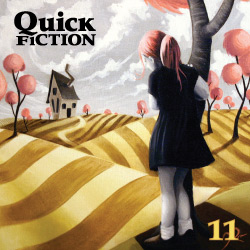Author of the recently published short story collection Elephants in Our Bedroom, Michael Czyzniejewski grew up in the Chicago suburb of Calumet City, Illinois. He graduated from the University of Illinois in 1995 with a degree in rhetoric, and two years later, he received an MFA in fiction from Bowling Green State University.
The collection features twenty-four stories, many of which have been previously published in a variety of magazines, from StoryQuarterly and The Southern Review to Quick Fiction, Monkeybicycle and others. One story from the collection, “Fight,” received a Pushcart Prize. A more recent story, though not included in Elephants in Our Bedroom, “On the Other Hand,” was published in The Best of the Web 2009. Czyzniejewski’s most recent story is forthcoming in The Los Angeles Review. He is also the recipient of a 2010 NEA Literature Fellowship.
In addition to producing his own writing, Czyzniejewski has worked as the Editor-in-chief of Mid-American Review since 2000. The magazine has recently placed work in The Best American Essays 2009 and The Best American Poetry 2009.
Czyzniejewski teaches writing full-time at Bowling Green State University, and for the past twenty years, he has worked summers as a beer vendor at Wrigley Field in Chicago. He lives in Bowling Green, Ohio, with his wife and three year-old son. Visit him online at www.michaelczyzniejewski.com.
Interview:
Michael Hinken: Teaching full-time during the academic year, working as a beer vendor at Wrigley Field in the summers, editing a literary magazine, and being a father and husband—that’s a lot to balance. How do you squeeze in your writing?
Michael Czyzniejewski: Every minute of every day is accounted for, and so I find myself writing from 12:30 to 2 a.m. If that happens three times a week, I’m doing pretty good. Sometimes I’m too tired. It’s like working out: I wish I could go to the gym more, I wish I could write more. The trick is not to feel bad about not doing something, to try to move on, write the next day and stick with your routine. If you want to write, you’ll write, and if you don’t, you won’t. Writer’s block doesn’t exist—it’s just being lazy or not caring.
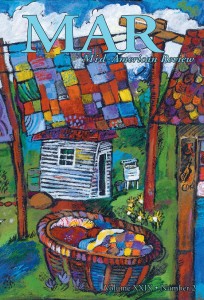 How did you become editor of Mid-American Review?
How did you become editor of Mid-American Review?
It was a little bit of luck—I was in the right place at the right time. I thought about getting a job as an adjunct somewhere or getting a PhD in creative writing. But then the Mid-Am job opened up a year after I graduated and it seemed like a good place to be.
It’s nice to have your second job be in the field of creative writing and literature. It’s not like I’m working at JC Penney at night selling socks or something. Being around stories and reading so much helped me as a writer. A lot of people gave me advice. I read a lot of first pages of stories over the course of a year, thousands of first pages, and reading that much really teaches you the importance of keeping a reader involved. In this way, reading so many stories teaches you what doesn’t work as much as what works in a story.
What makes a good first page?
I’m a big proponent of in medea res. Starting the story at the right place is pretty crucial. Many times I’ll read an opening with the protagonist driving to the story, or thinking about what’s going to happen, or waking up in the morning and going about a morning routine. Or else, what Jerome Stern calls the bathtub story—when nobody leaves the room they’re in, or the house or apartment. That story is static and a little too easy. As a reader, I want to be uncomfortable, I want to read about people behaving badly, or someone caught in a bad situation. A good story begins when the conflict hits, and it usually takes a risk, or has a flawed or troubled character caught in some action. Why would you create a character and go to the bother of writing a story if the story isn’t about this character’s most interesting, conflicted day of their life? This is the day nothing happens to my character? That’s not it at all. This is the day my character gets his leg cut off in a wood-chipper and later won the lottery.
I’d say a good first paragraph also contains some sort of mystery or at least pulls you through, somehow, keeps you questioning. Why do I need to understand everything about a character and his motivation on page one? Why would I keep reading?
So, aside from an interest in one-legged lottery winners, how does your own aesthetic influence your decision-making about what stories appear in Mid-American Review?
Every editor looks for stories they wish they had written. I’ve been at it long enough to sort of know those when I see them. And I’ve certainly been talked into something, when other editors bring a story from the pile. I’ve heard that Mid-Am has a certain aesthetic, a certain quirky, fast-paced aesthetic, and some people enjoy that and others don’t. That’s just the way it goes. But that’s the type of story I want to read. And just because I don’t go for a story, it doesn’t mean the writer won’t place it somewhere else. Not every writer will be able to get into every magazine. How many stories am I going to send to Kenyon Review or The Georgia Review before I figure out they’re not interested in what I’m writing? I always suggest that writers read a few issues of the magazine they’re sending to, just to get a sense of what the editors are publishing.
 From your perspective as an editor, what are some newer magazines that have caught your eye?
From your perspective as an editor, what are some newer magazines that have caught your eye?
The Collagist is one magazine that comes to mind. The Cincinnati Review is doing really well. I’m always impressed with Ninth Letter. For short-shorts, Smokelong Quarterly and Quick Fiction are pretty great. Hobart out of Ann Arbor has a nice magazine. And Salt Hill at Syracuse has an interesting point of view, an interesting perspective. One Story is a brilliant concept.
The new trend right now is design—magazines like McSweeney’s or Tin House are invested in making themselves look as good as possible so that people will hold onto the magazines, keep them like books. I think that’s great. But Mid-Am is not going to jump on that bandwagon–we’re going to do what we’ve always been doing. It’s not hard to make a magazine look nice, but maintaining a consistent quality of written work, that’s a little tougher.
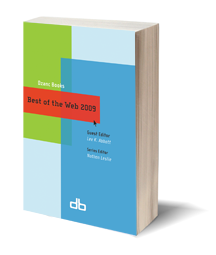 One of your more recently published stories, “On the Other Hand,” was selected for inclusion in The Best of the Web 2009. Do you think a certain type of story lends itself to online publication? Is there an online aesthetic?
One of your more recently published stories, “On the Other Hand,” was selected for inclusion in The Best of the Web 2009. Do you think a certain type of story lends itself to online publication? Is there an online aesthetic?
First, it’s important to remember that most people running online publications are newer writers, newer editors, and so they have a new aesthetic, a new approach to storytelling as opposed to what might be defined as a more traditional one. Most of the newer generation of writers aren’t writing traditional fiction. It’s also worth pointing out that anyone can start an online magazine.
Quite simply, though, length is often a major consideration. What if I can’t easily scroll through an online story? Am I going to finish it? Probably not. If there’s a long project online, I’m less likely to come back to it in the way I would come back to a book on my nightstand or toilet tank. The physical presence of a book in your life makes you get into it more and stay with it.
So, online, the short short has become a vibrant art form. It used to be that certain print places would take short shorts and others wouldn’t, but online the genre is thriving.
Several stories in the collection Elephants in Our Bedroom are short shorts—“The Magic of Oil Painting,” “Sleeping Through Starvation,” and “Fight,” to name a few. What appeals to you about this style of storytelling?
I admire the craftsmanship, the sort of concentration and paring-down that goes into writing a short short. To me, it’s a fusion of poetry and fiction, and so you can do things in a short short that you can’t really accomplish in a traditional-length story. The story arc is more simple, and you can pay attention to language and detail in a more focused way. If the story were longer, say twenty pages as opposed to two, nobody could maintain that focus on detail and language for that duration without going crazy. Imagine a punk rock song being seven and a half minutes instead of two minutes.
How do you know when an idea is a short short versus a traditional length story?
I don’t think you do know, setting out. Sometimes I will have written a thousand or fifteen hundred words and I’ll realize I could nail the story down in five hundred words or so. You end up cutting, paring down, cutting prepositions and articles until you get close.
Most of my short shorts are a scene with a paragraph or two of backstory, a sidebar or digression that will explain things. It’s not exactly a formula, but it’s how I write, it’s how I squeeze in as much depth as possible into the short form. Usually I end up with an image-heavy, idea-driven story, one that implies a lot and includes a strong main character. I wouldn’t say that I know if a story is going to be a short short when I set out to write it, but, in the process of writing, I discover what it is. Many people tell me they don’t get what the digression has to do with the story, but that’s part of the enjoyment, the mystery.
Let’s talk about surrealism in your writing. Many of the stories in the collection bend the rules of reality. I’m thinking of the men pulling fish out of the street in “Streetfishing” and the grandma-turned-into-a-canary in what’s probably my favorite story, “The Summer Without Grown-ups.” Why are you drawn to the surreal?
It’s easier to be original if you don’t have to deal with the rules we all live by. But even so, a story should be anchored somehow in reality—any story that’s experimental or all magic, it’s like some kids cartoon or a psychotropic dream. I don’t want to write stories like that, because, well, so what. Everybody has drug-addled experiences or crazy dreams. Everybody has crazy dreams every night. The reader probably had a crazier dream the night before reading your story.
 I’d like to think what I’m doing is rooted in Bender or Gabriel Garcia Marquez. It’s also because I’m a member of Generation X. When I was younger, I collected comic books and read a ton of them. I watched TV twenty-four/seven when I could. Imagine a writer in the 1960s or 1970s saying, “I’m inspired by comic books.” They were inspired by the classics, by the Bible. I’m inspired by the Transformers and Spider-man.
I’d like to think what I’m doing is rooted in Bender or Gabriel Garcia Marquez. It’s also because I’m a member of Generation X. When I was younger, I collected comic books and read a ton of them. I watched TV twenty-four/seven when I could. Imagine a writer in the 1960s or 1970s saying, “I’m inspired by comic books.” They were inspired by the classics, by the Bible. I’m inspired by the Transformers and Spider-man.
When you ask them, a lot of writers try to say they’ve been inspired by Proust or Kierkegaard. Really? I think a lot of writers today are more likely to read comic books, watch TV and spend a lot of time on the stream of consciousness that is the Internet. We don’t need to be inspired by the classics or the Bible. Flannery O’Connor is the best short story writer ever. “A Good Man Is Hard to Find,” now that’s a short story. The first time I read it, I thought I was in some very funny, very violent Quentin Tarantino movie.
Along with O’Connor, what writers have influenced you?
Mainly the minimalists. I was in college in the early 90s and my first writing teacher taught a lot of stories by Carver and his subsidiaries: Tobias Wolff, Richard Ford, Mona Simpson. I love Carver. He’s among my all-time favorite writers, but at the same time he doesn’t have the most vivid imagery. Most of his stories are set in the same place, houses or apartments, usually working-class, and the stories have largely the same scenario. I tried to do that all through grad school until somebody finally told me it’s not 1986 anymore, nobody writes books like that now. Then I realized, wait, I have pretty good imagination and I want to use it, and imaginative aspect is part of my voice now.
Two writers of my generation that have influenced me most are Aimee Bender and George Saunders. It was a real eye-opening day when I read Aimee Bender. But I had to read her collection like four times before I realized, hey, why don’t I try to write this?
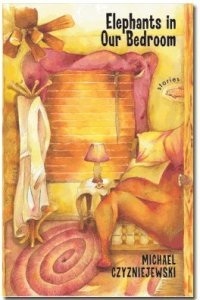 In the title story of your book, a man brings home an elephant he won on a bet, and, much to his surprise, his wife is oblivious to the animal’s presence. That sort of willed blindness speaks to many of the characters in the collection. As far as the title of the collection is concerned, did you begin with that concept or arrive there?
In the title story of your book, a man brings home an elephant he won on a bet, and, much to his surprise, his wife is oblivious to the animal’s presence. That sort of willed blindness speaks to many of the characters in the collection. As far as the title of the collection is concerned, did you begin with that concept or arrive there?
When I began thinking of the collection, I called it “The Death of Purple” after the story by the same name in the collection. But this was a little too narrow. I thought of the title story one day walking back from class, thinking about how I was always using the adage, “an elephant in the room” and so many of my freshman students had never heard of it. So I thought of that saying in terms of a story, in terms of writing about things that should be said but aren’t, but then I realized, no, it should be literal because that’s what I do. Most of the stories in the collection have this theme, and so it just sort of clicked
And what are you working on now?
I’m trying to write a novel and a collection of stories, but I’ll find that as I’m writing the draft of the novel, I’ll get ideas for a story that will pull me away. I’ll try to write the idea into the novel, but it ends up not fitting, and if I don’t write the story right away, I’m not going to remember it. I’ve got to say, I like the instant gratification of writing a story. Working on a draft of a novel, you dawdle on it for three hours and who knows if it’s even going to get published. I could get a lot of work done on a story in three hours.
I might add that one of the surprising things about finally publishing this collection was that I never once while writing imagined that strangers would be reading this book. I see comments on blogs, or reviews, or strangers come up to me after readings. It’s weird. I’m like, “Really? You read this book?” First, I write for myself; second, I write to publish in magazines. I like the collection aspect of it—it’s another notch. But I never write a story thinking, “People are going to love this! Wow, I can’t wait until the reading public gets their eyes on this!” I think that’s good. If I write for myself, it doesn’t matter what others think and I always have further motivation to write more.
Further Resources:
Quick Fiction has published three of Michael Czyzniejewski’s stories. Issues No. 7 and 9 have already sold out. However, you can still order Issue 11, which contains his story “Sleeping Through Starvation.” The journal publishes short fiction that is less than 500 words in length. To submit or check out other issues, visit their website.
For those of you who appreciate the short form, you can also visit SmokeLong Quarterly, which publishes flash fiction up to 1,000 words. The journal published Czyzniejewski’s story “Pregnant with Peanut Butter” in Issue 26, September 2009.
Or, if you’re in the mood for non-fiction in brief, Brevity publishes essays and reviews less than 750 words.
You can also read Czyzniejewski’s award-winning story “On the Other Hand,” which was published in the Fall 2008 Issue of Waccamaw.
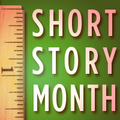 Or if you’d like to hear Michael Czyzniejewski discussing the work of a fellow author, here he is writing a guest blog for Short Story Month on the Emerging Writers Network about why Kevin Wilson’s superb short story collection Tunneling to the Center of the Earth was one of his favorite books of 2009.
Or if you’d like to hear Michael Czyzniejewski discussing the work of a fellow author, here he is writing a guest blog for Short Story Month on the Emerging Writers Network about why Kevin Wilson’s superb short story collection Tunneling to the Center of the Earth was one of his favorite books of 2009.


